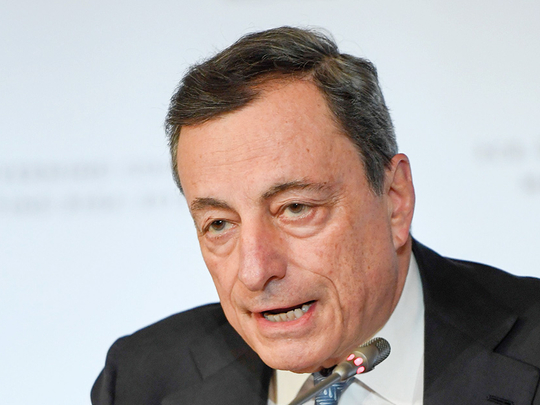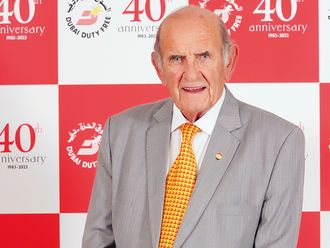
Riga, Frankfurt: The European Central Bank said on Thursday that it will end its unprecedented bond purchase scheme by the close of the year, its biggest step in dismantling crisis-era stimulus a decade after the start of the Eurozone’s economic downturn.
But in a balanced announcement reflecting the uncertainties hanging over the region’s economy, it also signalled the move would not mean a rapid policy tightening by adding that interest rates would stay at record lows at least until summer 2019.
The new rates guidance prompted the euro to reverse initial gains against the dollar of up to 0.5 per cent and fall to $1.1744 — 0.4 per cent down on the day. Markets had been set up for a 10-basis-point hike in the ECB’s benchmark deposit rate — currently at -0.4 per cent — by June 2019.
ECB President Mario Draghi declined to give more detail about the timing of rate moves in a news conference after the policy meeting, this time held away from the bank’s Frankfurt headquarters in the Latvian capital Riga.
“We didn’t discuss when to raise rates,” he said, adding there was an “undeniable increase in uncertainty” for policy-makers to contend with, a possible reference to rising trade tensions between the United States, Europe and China.
Eurozone growth
The ECB also downgraded its Eurozone growth forecast for this year to 2.1 per cent from 2.4 per cent previously, while upgrading its inflation forecast to 1.7 per cent from 1.4 per cent, largely as a result of rising oil prices.
“This is a very fine balance — a bit more hawkish on QE, but rather dovish on rates — that Mario Draghi hopes will keep the markets on an even keel and avoid a taper tantrum,” Neil Wilson, chief market analyst for Markets.com said.
Though full policy normalisation will take years, investors are already braced for the end of easy money from the world’s central banks. A hawkish US Federal Reserve dropped a crisis-era stimulus pledge on Wednesday while the ECB had already begun rolling back support after a five-year run of economic growth.
The ECB said the monthly pace of its net asset purchases would be halved to 15 billion euros from September until the end of December 2018, at which point purchases would end.
Ending stimulus
By putting a specific end date on its stimulus, the ECB is taking a more decisive step than when the US Federal Reserve started its own taper in December 2013. Then, it did not commit to a specific end or any subsequent steps.
The biggest complication could be a murky economic outlook, muddied by a developing trade war with the United States, a populist challenge from Italy’s new government and softening export demand.
But ECB policymakers have long argued that their mandate is to bring inflation back to target, not to prop up growth or fight off market turbulence in any particular country.
A broader slowdown could make it harder for the ECB to cut support if lower growth eases pressure on inflation, a threat to the bank’s credibility as it has missed its inflation target of almost 2 per cent for over five years.
Inflation
While inflation has remained weak, higher oil prices, increasingly evident wage pressures and record employment suggest that prices will be moving up in the coming years, even if more slowly than the ECB had originally hoped.
ECB Chief Economist Peter Praet, a Draghi ally and one of the most dovish members of the rate-setting Governing Council, recently argued that progress has been made on the inflation criteria, a strong hint that stimulus would be pared back.
The euro’s 5 per cent fall against the dollar since April is also helping the ECB as the weaker currency is increasing the cost of imports and boosting inflation. While a rebound is likely, the US Fed’s tightening stance will limit the potential for a big rise in the euro.












